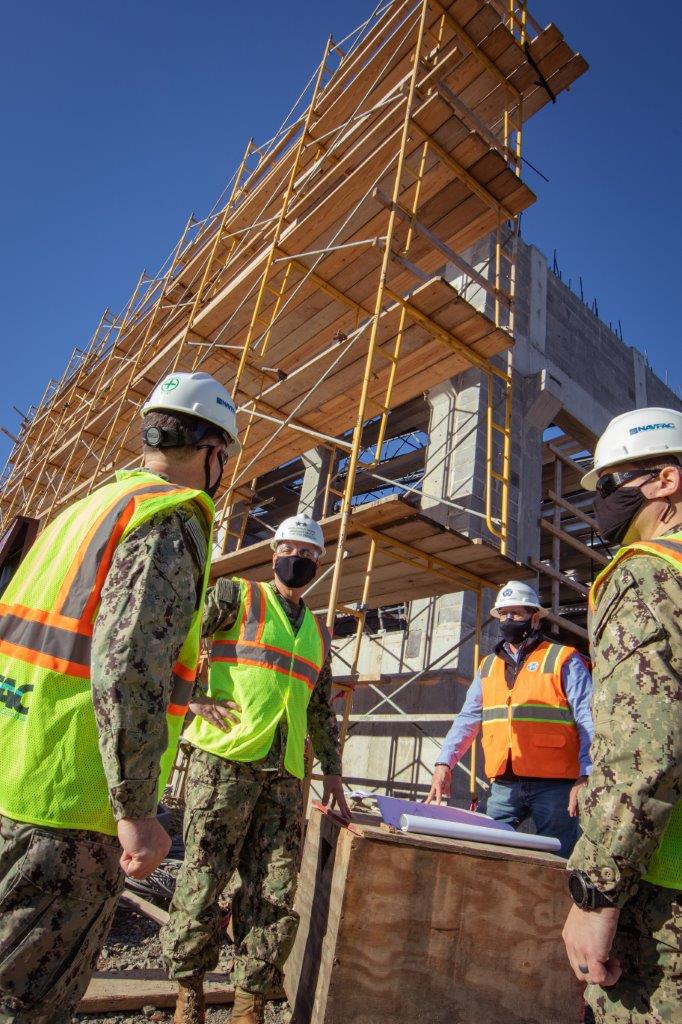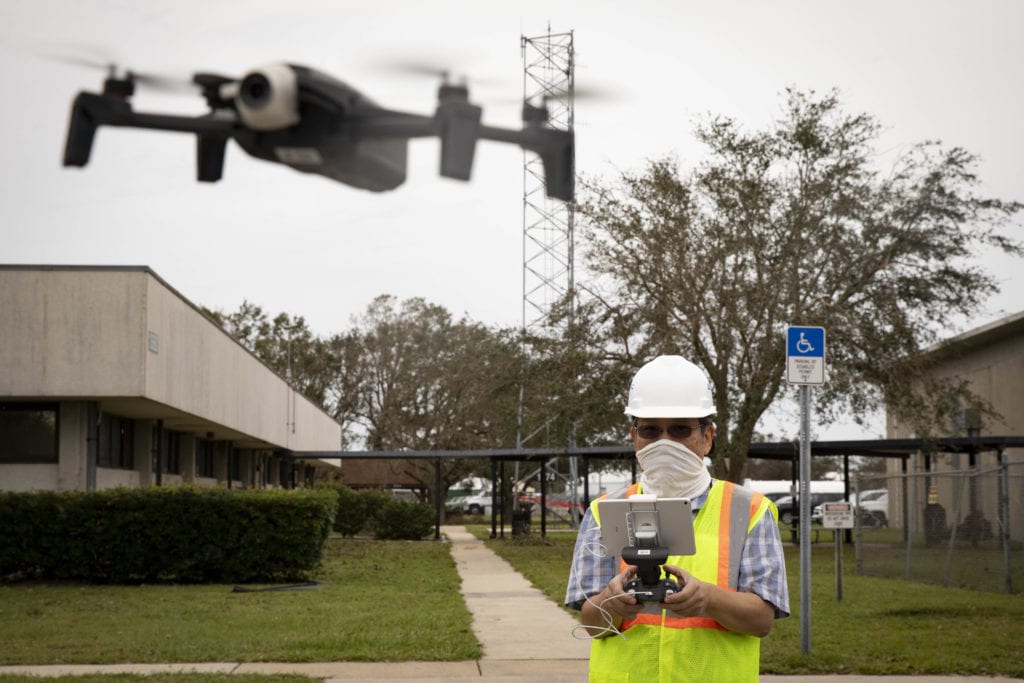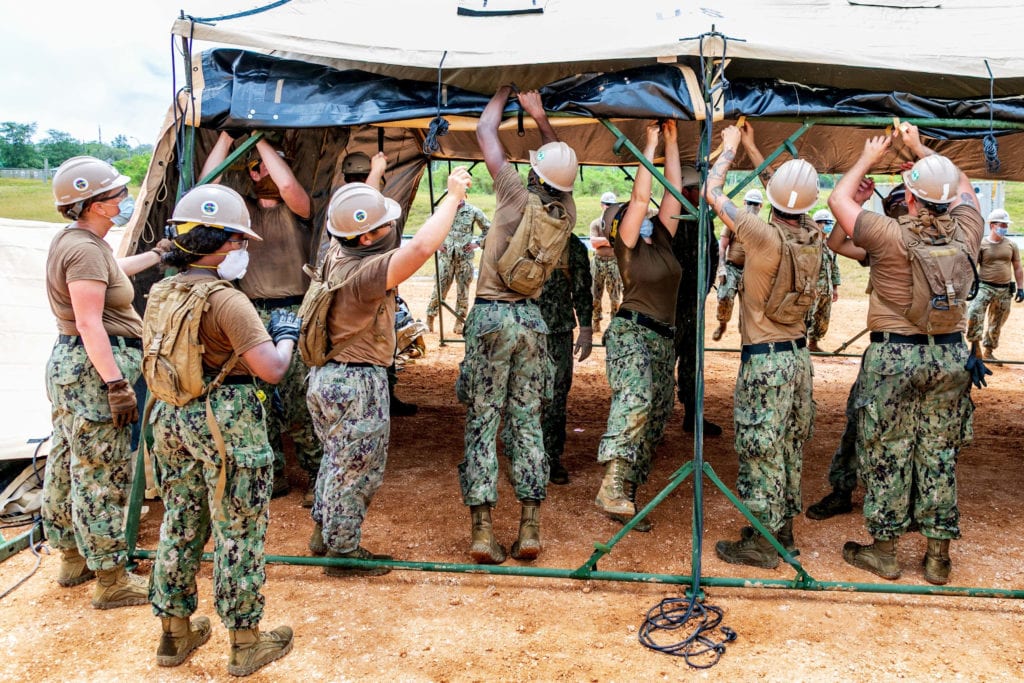
Rear Adm. John Korka, Civil Engineer Corps (CEC), is the commander of Naval Facilities Engineering Systems Command (NAVFAC) and chief of Civil Engineers. He leads NAVFAC’s CEC officers, civilians and contractors who serve as engineers, architects, contract specialists and technical professionals. His command delivers facilities engineering, expeditionary, and acquisition support to the Navy and Marine Corps, Unified Commanders, and Department of Defense agencies.
Korka discussed NAVFAC’s activities with Senior Editor Richard R. Burgess. Excerpts follow:
The Navy acquisition community has pushed contracts ahead of schedule to help industry get through the COVID crisis. What has NAVFAC done to advance contract awards or task orders to help in the current pandemic?
KORKA: At the start of this global pandemic, the CNO [chief of naval operations] and [James F. Geurts, assistant secretary of the Navy for research, development and acquisition] did something that I thought was critical. They set the tone and established priorities for operating in the COVID-19 environment. First and foremost, the health and safety of our military and civilian workforces was absolute. Second, we needed to maintain readiness and ensure the Navy does not come to an all stop. Lastly, it was important to support the whole of government approach in tackling COVID-19. Along with these priorities, Secretary Geurts released policy and emphasized our responsibility to keep execution moving forward smartly, support efforts to sustain a healthy industrial base, and to make sure that we did not use COVID as a rationale to stop efforts — I am talking primarily our construction work and sustaining functions to support base operations.
We used the priorities from the CNO and secretary to quickly move out as a SYSCOM [systems command] along three fronts — safety protocols, operating virtually and ceaseless communications. From the onset we strictly enforced adhering and complying with COVID-19 protocols. We were not going to compromise safety in any evolution, and we also wanted to make sure that our contractors were mindful of these requirements since protocols would be enforced.
The next leap was even more important — our jump into the digital domain. By that I mean we already had a good plan to move into online processing and pressing ahead into the virtual front. The pandemic actually accelerated that effort for us. Since the start of the COVID-19 emergency, we’ve had virtual site visits to accommodate contractors who were restricted in movement; we’ve held virtual safety training to educate contractors on bidding government work; and we’ve established policy and procedures for accepting electronic proposal submissions. All these happened quickly and allowed us to still do things that, typically, would have required a physical presence.
Lastly, we implemented a pretty aggressive outreach campaign with our industry partners to improve lines of communication. We held monthly virtual roundtable discussions with the construction/engineering industry, base operating support services contractors, and small business. These efforts definitely helped us better understand some of their challenges and recognize if industry needed our help with any policy relief. The monthly communication meetings are still occurring and have proven to be very successful.
Overall, I am proud of how everything came together within NAVFAC to continue to award and manage contracts during an unprecedented and challenging period of time.
Last year you discussed NAVFAC’s efforts to help the Columbia-class submarine join the fleet in the future. What major projects do you have in work right now, particularly in the Shipyard Infrastructure Optimization Program (SIOP)?
KORKA: In August, NAVFAC celebrated its 178th birthday, and what is interesting is that since the command’s commissioning we have always been responsible for building, maintaining, and recapitalizing shipyards. In fact, that is why we were established as a SYSCOM. Right now, our infrastructure recapitalization efforts remain ongoing, which is at the heart of our heritage, so that is pretty motivating.
When it comes to SIOP — this massive and daunting 20-year, $20 billion plus program — we continue to stay in close alliance with the fleet from a requirements standpoint which rests at NAVSEA [Naval Sea Systems Command], as well as supporting the shore enterprise at CNIC [Commander, Navy Installations Command]. Right now, we are looking at the development of “digital twins” at each of the shipyards [which] should really help us understand the optimal workflow configuration. This initiative will allow us to develop plans and engineering designs for specific projects with the proper sequence. Today, work is ongoing across all the shipyards — Portsmouth Naval Shipyard in Maine; Norfolk Naval Shipyard in Portsmouth, Virginia; Pearl Harbor Naval Shipyard in Hawaii; and Puget Sound Naval Shipyard in Washington — at each one of these locations, we have planning and construction efforts underway.
We are furthest along at the Portsmouth Naval Shipyard, where we have over $300 million worth of projects associated with the new multi-mission drydock facility and planning to support the future construction of a super flood basin project. All this work supports the future refueling of the SSN-688 [Los Angeles-class attack submarines]. At Norfolk Naval Shipyard, over $320 million in construction and repair work is going towards drydock and utility upgrades. In Pearl Harbor, we are doing some of the design to support the Virginia class Block V extension for the drydock. At Puget Sound Naval Shipyard, we are doing preliminary design and environmental work. All of this shipyard work is aimed at repairing, modernizing, and returning ships back to the fleet and preparing infrastructure for the fleet of the future.
Without question, this effort is probably one of the most significant and direct contributions that we will be making as a SYSCOM for enabling lethality and maximizing our Navy readiness for many years to come. We are pretty charged up and inspired by the challenges and opportunities provided by SIOP.

With the nation being hit with a lot of hurricanes and an earthquake in the last couple years, what progress has been made by NAVFAC in those recovery efforts?
KORKA: NAVFAC has a lot to be proud of with regard to responding to natural disasters that damaged infrastructure at our Navy and Marine Corps bases over the past two years. We showed our agility and technical know-how as a SYSCOM with these events — the hurricane that hit [Marine Corps bases at] Camp Lejeune, Cherry Point and New River [in North Carolina] pretty hard, as well as the earthquake at China Lake, California — tested our technical and acquisition acumen. Thanks to our responsiveness, agility, and technical and contracting authorities, we were able to get a significant number of construction projects awarded.
To support the surge of construction and repair work, we established two new commands, OICC [Officer in Charge Construction] China Lake, and OICC Florence [for bases in North Carolina] that are solely responsible for directing and managing these efforts. We have about 200 people on the ground today at both locations that we did not have in the past to oversee all the construction work. At China Lake, we are looking to award 18 military construction projects valued at $2.3 billion in total. So far, we awarded nine of these projects at a little over a billion dollars, only 14 months after the earthquake occurred, which alone is an impressive feat. The projects consist of an array of work, from an advanced weapons hangar to a mission integration lab, weapons magazines, an aircraft control tower, and even a new aircraft-parking apron. In fiscal year 2021, we plan to award an additional $1 billion dollars for work in China Lake. The teams are in place, projects have been awarded, and we are making good progress.
For the Hurricane Florence recovery, we have 30 military construction projects underway valued at $1.7 billion. Some of these projects include a Marine special operations training facility, maintenance hangars, service support facilities, a logistics operations school, and an array of troop support facilities.
For both disasters, we greatly benefitted from swift funding support as well as tremendous coordination with the Office of the Secretariat, OPNAV and Headquarters Marine Corps staff, NAVAIR [Naval Air Systems Command], and CNIC for defining requirements. We are pressing ahead even in the face of COVID, which has not slowed us down. I see this as a great testament to our resiliency, commitment, and our technical competence.
What are the trends with building and operating military housing, public and private?
KORKA: Quality housing is probably one of the most important contributions to enabling warfighter lethality. Giving our men and women in uniform places that they can call home and where their families will be safe is something that helps them to focus on their mission while they are deployed. We’ve gotten some unfavorable media coverage regarding the PPV [public-private venture] housing program over the past two years, so we looked at four main efforts to improve the quality of our military housing to ensure that our warfighters and their families live in safe, quality homes.
First, about a year ago we refocused our efforts, exercising our authorities under the Housing Revitalization Act in 1996 to regain the trust of our residents by reinforcing the Navy’s oversight role and responsibilities.
Second, early in 2020 we conducted a thorough review of how we work with our PPV partners to ensure that they were responsive to the residents’ work orders with quality results. We used data analytics, developed a standardized way to measure their performance and took a hard look at the recurring problems to figure out root causes and develop long-term solutions.
Third, we also shifted our focus from just property management to evaluating the financial management of our public/private ventures. This meant improving and standardizing some of the financial reporting and performing portfolio reviews in greater detail to recognize and prevent deficiencies.
Lastly, to address the health of these agreements, we are working with OSD [the Office of the Secretary of Defense] as well as Congress to make policy changes and apply lessons learned from our sister services, the Army and Air Force. In the end, we owe it to our Sailors, Marines and their families to provide them safe and quality homes. It’s important to remember that these are long-term agreements, 30-50 years in length, so effective sustainment and oversight of our DoN PPV housing portfolio must be taken seriously. Regaining the trust of our families is the most important outcome here, and we are committed to success in this area.

NAVFAC has been building and upgrading facilities on Guam and the Marianas to host the Marine Corps forces. What progress has been made in those facilities?
KORKA: My previous flag assignment was as the commander, NAVFAC Pacific, in Hawaii, where I was dual-hatted as the U.S. Pacific Fleet engineer. We had the responsibility of overseeing all the work in Guam and throughout the Marianas Islands, and across the Pacific theater. The posturing of forces is extremely critical in this era of great power competition and the construction work underway in that region is an important element of the strategic objectives in the Pacific AO [area of operations]. We are still doing a lot of the environmental impact statements, and some training requirements are still being finalized. Work is definitely underway, and our job is to support Marine Corps needs.
In Guam, we have 103 projects valued at $6.5 billion. So far, more than 500 acres have been cleared, we have completed 14 projects, 15 are still underway, and five more are in the process of being awarded. These projects are spread across Andersen Air Force Base, Apra Harbor, Finegayan, and Marianas islands. They cover everything from aviation to sea embarkation, non-live firing training, some off-base improvements in the utility system, and roads. Today, you can now see a base called Camp Blaz that did not exist over a year ago.
Our Pacific work goes beyond the Marianas islands. We have projects that support the posture initiatives throughout the Indo-Pacific region to include Darwin, Australia, Indonesia and Palau. The bottom line is our SYSCOM is taking on this once-in-a-lifetime construction surge with urgency and flexibility. We’re on the right course and vector to continue to deliver at the speed of relevance for the Marine Corps.
How are the Seabees performing in the COVID environment?
KORKA: The Seabees that were deployed in Guam played a role in the construction of a 150-bed Expeditionary Medical Facility onboard Naval Base Guam for expanded medical capabilities in support of DoD’s COVID-19 response. Their performance personified our “can do” rally cry.
Some deployment cycles were affected in terms of extensions or delays, but in the end, our Seabee units continued the mission our Navy and Marine Corps called upon them to execute.
From a readiness standpoint, we’ve been very disciplined on adhering to the CNO’s priorities and following the established COVID protocols, which has gone a very long way to maintaining our level of readiness.
Anything else you would like to add?
KORKA: Thank you. I would like to take advantage of this question to brag a little bit about NAVFAC. As a SYSCOM, we have done a lot this year around the world. I believe that our SYSCOM has shown the responsiveness, resiliency and agility that our Navy and Marine Corps needed. It was a record-breaking year… the volume of work was about $13 billion in contracts — the prior year was only $10.9 billion, the highest since 2009 — and we did all this while facing COVID. I think that says a great deal about the talent and commitment of the people of this command.
In response to the global pandemic, we were able to assist the Army Corps of Engineers in the conversion of hotels to alternative care facilities. We supported the Corps at 14 locations in the Midwest and Mid-Atlantic [states], as well as in the Southeast and Guam.
Over the last 18 months, we have put a special focus on our technical and contracting authorities and capabilities to better enable warfighting and also support of distributed maritime operations and expeditionary advanced base operations. As an example, our warfare center in Port Hueneme, California, executed the first ever landing of the rotary-wing aircraft on a Navy lighterage system. This proved out a viable concept of refueling and re-arming in a contested environment.
Using a Perform to Plan (P2P) approach, we are employing data and analytic capabilities to inform investment priorities and focus leadership engagement … at every echelon around the globe our sights are squarely aimed on speed, agility, and costs in support of fleet readiness. We stood up an analytics office to better monitor and accelerate our performance and to improve our execution. We also stood up a real estate acquisition office to promote projects that enhance warfighting readiness and avoid costs. Overseas, our team designed and deployed two miles of port security barriers for the Navy’s Fifth Fleet within nine months of request.
While this was a big year in terms of business volume, we still have a lot of work ahead of us. However, I believe that we are on the correct vector and we are moving ahead with urgency to support the Navy and Marine Corps. It is a unique period with great power competition and I believe we are adjusting to this in the right ways. It is an honor for me to serve in this command and support the fleet and our great nation.
- SECNAV Advocates Increased Legal Immigration to Increase Shipbuilder Workforce - April 23, 2024
- Insitu Going Strong at 30, Focusing on Maritime Operations - April 8, 2024
- Navy Awards Boeing Additional Funds for MQ-25 Drones for Testing - April 3, 2024




